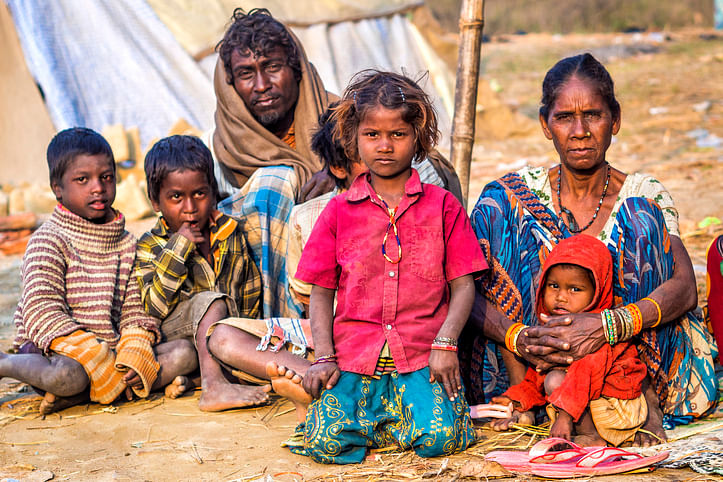
During his Independence Day speech, Prime Minister Narendra Modi announced that by 2024, the government will fortify the rice distributed to the poor via different schemes such as the Mid-day Meal programme in a bid to address the problem of malnutrition.
A few days earlier, however, 170 individuals and organisations comprising nutritionists, agricultural scientists, farmers’ groups, academics, etc., from across India had written to the Food Safety and Standards Authority of India (FSSAI) urging it to scrap plans to make synthetic/chemical fortification of foods mandatory. Another team of experts in health economics and public health has urged the government to take “extreme caution” before resorting to mandatory fortification of rice.
In October 2016, FSSAI operationalised the Food Safety and Standards (Fortification of Foods) Regulations, 2016, for fortifying staples, namely wheat flour and rice (with Iron, Vitamin B12 and Folic Acid), milk and edible oil (with Vitamins A and D) and double fortified salt (with Iodine and Iron) to “reduce the high burden of micronutrient malnutrition in India”, with fortification to be made mandatory starting in 2024. Six states have already started distributing fortified rice, mixed with nutrients, in identified districts.
The Global Hunger Index (2020) places India at the 94th spot among 107 countries, calculated on the basis of total undernourishment of the population, child stunting, wasting and child mortality. But experts, medical professionals and nutritionists are not convinced that fortification is the best way to tackle the issue.
Among others, one argument against fortifying rice is that artificially enhancing traditional cereal has its own hazards. Veena Shatrugna, former deputy director, National Institute of Nutrition, Hyderabad, says that adding micronutrients cannot compensate for the lack of nutrition in everyday food. Nutrients come from various sources and do not work in isolation. It is only in a balanced combination of other vitamins that minerals like iron, for example, can be properly absorbed by the body. Otherwise, it goes a waste.
The present programme is not aimed at doing away with providing iron tablets through the ICDS programme to the vulnerable section. Hence it could even lead to ‘over supplementation’, ending in other health hazards.
The Alliance for Sustainable and Holistic Agriculture (ASHA Kisan Swaraj) argues that while food scientists know about the technology of fortification, like, how many milligrams of the powdered vitamin or mineral should go into a kilogram of food, they do not know its impact on health
India is the second biggest producer of rice, after China. It is the staple food of 65% of the population. Yet, there is this idea in a section of society that traditional rice varieties do not have enough nutrients. This is another argument favouring fortified rice. A view that Debal Deb, plant scientist, nixes. He has been collecting indigenous rice stalks for years for a seed bank and says that a considerably large number of traditional rice varieties do contain a range of micronutrients -- Vitamin B, Vitamin A and minerals. In fact, lab tests have shown that 68 folk varieties contain higher levels of iron and zinc than that reported for any GM-fortified rice. There is a paucity of research in mainstream institutions to explore the nutritional profiles of folk rice varieties.
In hindsight, many agricultural scientists admit that the Green Revolution (1960-70), was perhaps necessary at that time to tackle food shortage, but it also brought in a monoculture of crops, sidelining traditional varieties of rice which are better equipped to survive against droughts, floods, etc., compared to hybrid varieties. The devastating Aila cyclone in 2009 in West Bengal flooded the Sundarbans delta region with saline water and made it unsuitable for hybrid rice cultivation. Old-timers then went looking for saline water-resistant rice varieties that had existed earlier. With natural disasters becoming more frequent due to the effect of climate change, many experts feel that encouraging cultivation of traditional nutritious varieties would be a better idea than spending crores on fortification. Besides, it would help preserve our folk, hardy varieties for posterity.
Fortification will also encourage prevalence of packaged foods. The signatories of the appeal to FSSAI are apprehensive that as a next step, corporatisation will become inevitable, hiving off small farmers and entrepreneurs who would not have the resources to buy the expensive chemicals, which again would be supplied by big corporates.
Finding ways to improve diets by diversifying them with widely available nutrients in dense vegetables, millets, animal protein, dairy, etc., can go a long way, nutritionists suggest, instead of taking recourse to artificial supplements. Local communities, farmers and women’s collectives can be encouraged to venture into production in these fields with financial and infrastructural incentives.
True, malnutrition is a huge problem in India. But taking hasty steps to tackle it without taking into consideration other options could precipitate new health issues in the future.
(The author is a Kolkata-based freelance writer)